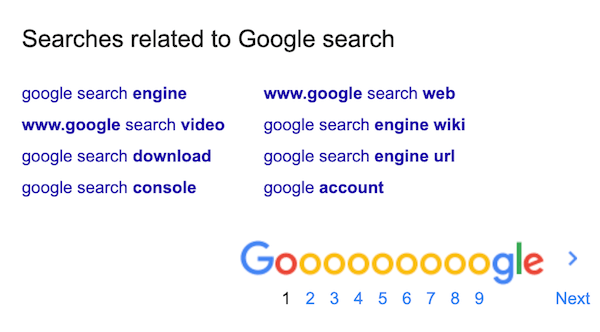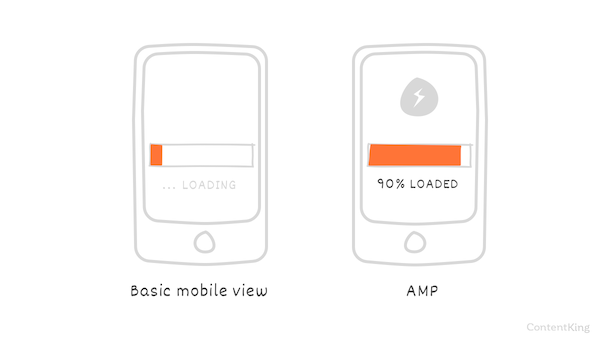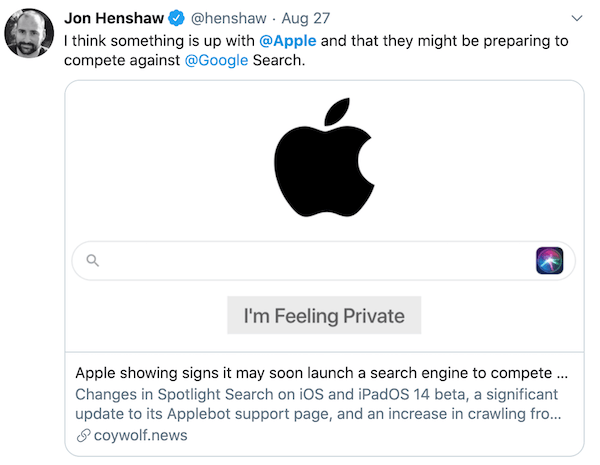Will Apple Take On Google With Its Own Search Engine?
A new adventure-filled chapter may soon open up to SEOs, as Google might receive a very powerful competitor.
According to Jon Henshaw from Coywolf (opens in a new tab), rumor has it that Apple themselves, no less, are launching their very own search engine.
So far, Apple is getting paid billions of dollars from Google to keep it as the primary search engine in Safari. But what with the latest policies against Google’s practices in the UK and the European Union (opens in a new tab), this situation is changing rapidly.
Jon Henshaw points out that there are several signs hinting that Apple is already working on this grand project.
Firstly, Apple recently opened up job positions for search engineers, meaning that they have taken the matter seriously. Secondly, iOS and iPadOS 14 beta both use Spotlight Search for queries, which can lead to a complete bypassing of Google.
Moreover, the tech giant has also published a notable update to the Applebot Support page (opens in a new tab), which describes Apple’s own crawler—Applebot. For instance, the article now explains how to verify traffic from Applebot and elaborates the details of Applebot’s user-agent. Applebot has also extended its robots.txt rule.
The signs are all here, but nobody knows for sure.
What would this search engine look like?
Given that Apple advocates for the personal data privacy of every user, the search engine would most likely be a private service for each one of them. However, it would be highly personalized and connected to their private Apple ID as well as based on their user preferences and personal data, such as emails or messages.
The search engine could be delivered into almost every part of Apple’s ecosystem, and so users wouldn’t need to leave it at all.
If the rumor proves true, these highly-personalized approaches will also deliver a different set of rules for SEOs, who will have to adapt to the new conditions.
Against the backdrop of an enormous network of Apple users who would use Apple search only, this situation would diversify the requirements for pages to rank in Apple search and Google simultaneously. The opportunities and struggles this could create are unpredictable.
Backlinko: only 0.44% of searchers make it to Google’s second page
The importance of ranking the highest is no secret for anyone. But how do people tend to behave while performing search tasks in Google overall?
To obtain an idea of that, a team of researchers at Backlinko (opens in a new tab) asked 454 US-based participants to perform a set of tasks using Google search. In total, the team evaluated 1,801 Google behavior sessions.
They focused on the difference in clicks between ads and organic results, the number of users who make it to the bottom of the page, average session length, and many other metrics.
One of their most interesting findings was that 50% of users spent less than 9 seconds in search before clicking on a search result. Moreover, around 23 percent of them used one of Google’s autocomplete suggestions.
What’s also interesting is that only around 15 percent of users modified their search when they didn’t see results that would fit their intent.

Although we kept the limitations of Backlinko’s research design and low sample size in mind, these results caught our attention:
- Backlinko suggests that only 9 percent of users make it to the bottom of the first search page
- 65% click on the first 10 blue links in search
- Only 0.44% of searchers visit the second page of Google’s search results.
Yet again, this illustrates the importance of ranking on the first page on Google.
See if there isn’t something blocking your SEO success. Run a quick check with ContentKing.
Official AMP WordPress Plugin Updated to 2.0
Google has stepped up its Accelerated Mobile Pages (AMP) game with the latest update to their official AMP WordPress Plugin (opens in a new tab).
The plugin, which has around half a million active installs, enables users to quickly generate AMP websites for their WordPress projects. The aim of this plugin—published by Google themselves—is to give WordPress owners a way to build lightning fast pages with minimal resources.

Compared to the previous version, AMP 2.0 has seen quite a few upgrades. Most importantly, the new version offers an Opt-in/Out option, which gives site owners the flexibility to choose which parts of a site should and should not be served as AMP.
Moreover, the new version offers automatic redirection of mobile visitors to the AMP version. Version 2.0 also distinguishes among roles in Wordpress. Admins can now hide the developer tools from users who aren’t responsible for handling any validation issues.
In addition, admins can now also suppress the execution of specific plugins when rendering AMP pages. This can help to eliminate issues caused by non-AMP plugins.
Think twice before going AMP
Although the purpose of AMP is to make your website super fast for mobile users, and thus comply with mobile-first indexing, AMP isn’t always the best choice to deploy to your site, as it has a couple of disadvantages.
Your website’s functionality will be limited to a certain extent, which depends on how AMP-compatible your WordPress theme is, as well as your active plugins. It also means you will have to give up more control to Google regarding how and when to show your content.
In addition, the readers template for AMP Wordpress Plugin 2.0 still doesn’t support ads to the same extent as your non-AMP version would.
Google introduces structured data for home activities
During these times of forced lockdowns and quarantines, Google has decided to make it easier for people to exercise at home.
To enable people to find their preferred home activities, the dominant search engine has introduced a new section to their supported structured data developer docs.
“When people search for activities to do at home, videos and online events appear in a rich result. People can click a video or class, and see more details, such as a description of the activity, how to register, or watch now,” Google states in their official guide (opens in a new tab).
Users can use either the Event or Video structured data for documentation. The Event type serves better when the activity is planned for the future, while Video is good for already existing videos.
But be warned that in order to comply, the events have to be virtual. So you should make sure to set eventAttendanceMode to OnlineEventAttendanceMod. You should use the VirtualLocation type for the location alongside with the location.url property. And don’t forget to set up a specific time zone.
<html>
<head>
<title>Boxing Workout</title>
<script type="application/ld+json">
{
"@context": "https://schema.org",
"@type": "Event",
"name": "Boxing Workout",
"startDate": "2021-07-31T06:00:00-05:00",
"endDate": "2021-07-31T07:00-05:00",
"eventStatus": "https://schema.org/EventScheduled",
"eventAttendanceMode": "https://schema.org/OnlineEventAttendanceMode",
"location": {
"@type": "VirtualLocation",
"url": "https://googlebotcourse.com/boxing-workout"
},
"image": [
"https://example.com/photos/1x1/photo.jpg",
"https://example.com/photos/4x3/photo.jpg",
"https://example.com/photos/16x9/photo.jpg"
],
"description": "Boxing is a full body workout that rapidly changes the shape of your body through a dynamic workout. The technique develops lean, strong and flexible muscles.",
"offers": {
"@type": "Offer",
"url": "https://www.googlebotcourse.com/event_offer/12345_201803180430",
"price": "30",
"priceCurrency": "USD",
"availability": "https://schema.org/InStock",
"validFrom": "2021-05-21T12:00"
},
"organizer": {
"@type": "Organization",
"name": "Get Fit with Googlebot",
"url": "https://getfitwithgooglebot.com"
},
"performer": {
"@type": "Person",
"name": "Virginia Woolf"
}
}
</script>
</head>
<body>
</body>
</html>If you’re publishing a video, add the description and duration properties too.
<html>
<head>
<title>20 Min Aerobic Workout Reduction</title>
<script type="application/ld+json">
{
"@context": "https://schema.org",
"@type": "VideoObject",
"name": "20 Min Aerobic Workout Reduction",
"description": "Get your exercise in, from home. Watch this quick 20 minute workout video.",
"thumbnailUrl": [
"https://example.com/photos/1x1/photo.jpg",
"https://example.com/photos/4x3/photo.jpg",
"https://example.com/photos/16x9/photo.jpg"
],
"uploadDate": "2020-03-31T08:00:00+08:00",
"duration": "PT20M46S",
"contentUrl": "https://www.googlebotclass.com/video/123/20-min-workout.mp4",
"embedUrl": "https://www.googlebotclass.com/embed/123",
"interactionStatistic": {
"@type": "InteractionCounter",
"interactionType": { "@type": "http://schema.org/WatchAction" },
"userInteractionCount": 5647018
}
}
</script>
</head>
<body>
</body>
</html>Here’s wishing you lots of viewers, and sporting success!
Keep up to date!
Want to be kept up-to-date on all things SEO?
Sign up for our newsletter and follow us on social media:



